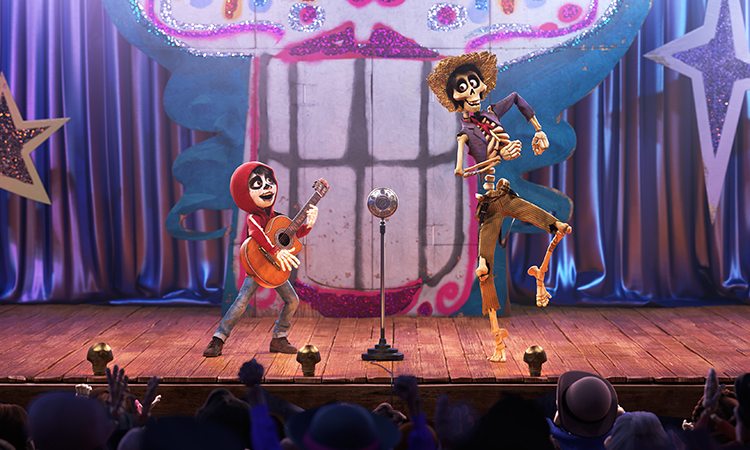Pixar Animation, long upheld as the studio that could do no wrong, has had a bit of a slump lately. Some of its efforts in the past few years have been its weakest, and the animation group’s horizon consists largely of sequels to beloved properties. Pixar’s partner studio, Walt Disney Animation, has been engaged in the admirable mission of representing a wide range of cultures and people. This mission has bled into Pixar’s goal of bringing imagination (and tear ducts) to life, resulting in “Coco”—a musical ode to Hispanic culture that could potentially revitalize Pixar.
The movie’s story wraps around the traditional Mexican holiday Día de Muertos, in which families gather together to pray for and reminisce over lost loved ones. The focal family is the Riveras, a clan in small town Mexico that hates music as much as the city in “Footloose”. This doesn’t sit well with the family’s youngest, Miguel Rivera, who is forced to pursue dreams of musicianship in secret. On Día de Muertos, he sneaks into a graveyard to steal his dead idol’s guitar for a talent show, which transports him to the Land of the Dead: a world of deceased family, spirit guides, and challenges for Pixar’s animators.

The possibilities for Pixar to dabble in the different are endless. They succeed when it comes to inventive worldbuilding: Pixar’s animation is more lush and detailed than ever, alternating between gorgeous drawings of Hispanic culture and the panoramas of an impossible world. The film’s cultural representation is handled just as lovingly as the animation—the narrative, however, is not.
The plot of “Coco” is by the numbers formula, with a new culture and thematic struggle plugged in. Though the ethnic touch is respectful and the conflict human, the narrative surrounding it all is a bag of loose rehashes. If you’ve seen another Pixar movie—or another kids’ movie, really—there are numerous elements of “Coco” that you could guess ahead of time. It’s ridiculously predictable: from the opening narration (which divulges far too much), I correctly anticipated the entire first half of the movie; from the halfway point, the entire second half. Your kids may be surprised, but adult brains won’t experience any narrative novelty.
There’s plenty for all age groups to enjoy, though: there are fun animal sidekicks and instances of frivolous wit (the funniest of which concerns a dead but still kicking Frida Kahlo), the voice cast exudes excitement all around, and Michael Giacchino’s score is guaranteed to get foots tapping. None of the songs are earworms that your children will be singing until the final days of mankind, but they’re punchy selections from a culture with lively music.
As is obligatory for Pixar, there’s an expected emotional gut punch. The studio’s strongest movies have always dealt with death: whether literal death in “Up”, the death of childhood in “Toy Story 3”, or the death of the planet in “Wall-E”. Death has quite optimistic connotations in “Coco”, so the film flirts with the one thing that’s scarier: being forgotten. When the screenplay sinks its teeth into this most unfortunate reality, “Coco” bows out powerfully.
This isn’t a comeback for Pixar due to its slavish adherence to plot beats of the past, but it’s proof that the studio still knows what it’s doing—even when it’s on cruise control.
★★★½ (3.5/5)




